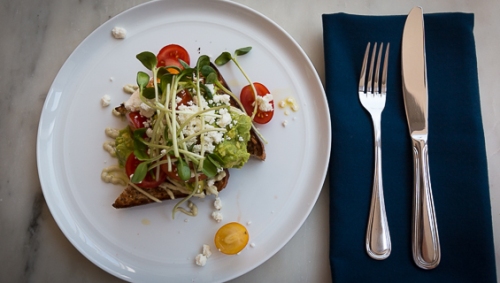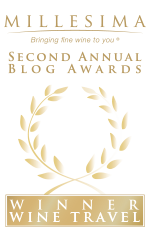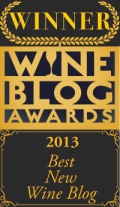The stunning UNESCO Vineyard Terraces of Lavaux, Switzerland, along Lake Geneva.
Category Archives: Hungary
Coffee and Tea Predictions for 2015
Coffee and Tea: What New Yorkers Should Expect in 2015
New York coffee and tea lovers enjoyed accelerated growth in the caffeine world last year: The Aussies continued to sweep through the city with their avocado toasts and flat whites (plus the first stateside location of tea brand T2 opened); Scandinavia made it’s mark, especially as a Manhattan-born but Swedish-styled coffee, chocolate, and restaurant chain called FIKA quietly mushroomed around town; and the number of specialty coffee shops rose at an unprecedented rate, with many electing to take control of their brand and beans by roasting their own coffee.
Curiously, Starbucks attempted to become a bar with its “Evenings” program, securing liquor licenses for test locations in several major cities with the expectation of pumping beer, wine, and small plates into thousands of stores over the next few years, although itfailed in its first Brooklyn attempt in Williamsburg. (The neighbors and local businesses just weren’t having it.) Then days ago, the brand debuted the flat white on menus around America, a drink New Yorkers know well, but perhaps Iowans don’t.
So, what other odd, exciting developments should we expect for 2015? We spoke with several local coffee and tea insiders for their crystal ball projections.
More Avocado Smash! Fancier Toast!
Only a few years ago, NYC coffee shops were strictly opposed to selling food, believing it detracted and distracted from the seriousness of their coffee programs. (When Howard Schultz returned to helm Starbucks in 2008, he decried that the “scent of the warm sandwiches interferes with the aroma of the stores.”)
Now, Jonathan Rubinstein, founder and president of Joe, says it’s rare to walk into a café that doesn’t serve a savory dish, adding that he currently sells far fewer muffins than five years ago. “By not offering savory options, [we] were losing customers who could only make one stop in the morning.”
Matt Swenson — director of coffee sourcing, education, and quality control for Nobletree — concurred, believing the swell in toast options on menus will only get fancier in 2015. While he doesn’t know the technical name for the dish — “It’s just toast that is super fancy, in my opinion,” he says — he recalled a “slamming” avocado smash he enjoyed in a London cafe not long ago. Fortunately, you don’t need to head to Drizzle City to get one. Here are three NYC spots, serving them up: Bluestone Lane, Toby’s Estate, Little Collins.
Specialty Coffee is Becoming the Norm
Last year, notes Taylor Mork, co-founder and president of Brooklyn-based green coffee wholesale company Crop to Cup, specialty coffee consumption in the U.S. finally exceeded 50 percent of market share. As he puts it, “more and more consumers recognize what good coffee can taste like — how diverse and exciting it can be — and they’re also willing to pay more for it.” Quality coffee is still grossly underpriced, but, as the theory goes, the more money we are willing to part with, eventually, the more the farmers will get paid what their labor is worth. Hallelujah.
The Proliferation of Specialty Coffee Shops Continues
Expect to see great coffee shops inhabiting every corner of the city this year, due to the hyper-local nature of the business, and the aforementioned growth in appreciation of it. Says Rubinstein, “Years ago, coffee culture only exploded in Brooklyn and below 14th street; now, there isn’t a neighborhood I can think of where owners aren’t scouting for or have signed leases.” Great news for folks living on the once dark side of the moon, like the Upper West Side, Harlem, the Financial District, half of Brooklyn, etc. Some of this has been fueled by deep pocket investors and private equity. Swenson says specialty coffee saw a “flurry of Venture Capital money dive into the…sphere” in 2014, close to $100 million just in public deals.
Restaurants Finally Get with the Coffee Program
Have you ever finished a fantastic multi-course, Michelin-starred dinner (or just a fantastic, farm-to-table, producer-driven lineup, with the origin of every product listed on the menu testifying to the great care taken to procure the best ingredients), only to be served an after-dinner coffee that’s similarly marked up in price, but in no way up to par in quality? This problem has embarrassingly existed in restaurants for far too long, but 2015 may bring hope to post-dinner coffee drinkers.
“There’s an alarming percentage of the restaurant coffee landscape…still dominated by ease-of-use programs that rely on capsules and pods,” says Jesse Kahn, Counter Culture’sregional wholesale sales head, but he believes New York is finally making “great strides” in this department. Counter Culture sells to and trains staff at forward-thinking restos like Maialino and The Spotted Pig to ensure good coffee gets served to those who deserve it.
Do Two Matcha Bars a Tea Trend Make?
Not yet, but hopefully, according to Michelle Gardner, who recently opened ChaLait with partner Ramon Puyane. The first NYC-based, dedicated matcha café (matcha is a powdered Japanese green tea drink) opened in Williamsburg last year, and it was appropriately named MatchaBar. Gardner says, “Two bars …would probably not be considered a trend, but we’d like to think that there are more to come. We’ve kept a close eye at the overall awareness in matcha over the last two years…and there has definitely been a marked increase.”
Matcha lattes have been popping on menus of national chains like Starbucks, Peets, and Teavana, she says. Both Ippodo Tea Shop and Cha-An, a Japanese tea house, serve up the purportedly healthy, energizing drink. Keep an eye out for more matcha drinks and infusions this year. (Tiny Pinecone makes a killer matcha milk jam.)
New Uses for Coffee: Chocolate, Cocktails
Prized coffees will no longer be “celebrated [just] for their flavor profile diversity but utilized…as an ingredient to something larger,” predicts Swenson. For example, a local chocolate-maker incorporated a Nobletree Ethiopian Yirgacheffe into its bars specifically for its lemon and floral qualities. Cocktail bar Amor & Amargo in the East Village prepares specialty coffee cocktails, pairing specific coffee flavor profiles with bitters.
Expansion of Ready to Drink Products
Did you notice all the bottled cold brew coffee populating the shelves of high-end groceries last year? (See, for example, Foragers in Chelsea.) According to Swenson, these Ready-to-Drink (RTD) products experienced rapid growth in 2014. He sees this year as “the year of distribution” for these specialty brand drinks out to mass markets, a la Stumptown and Blue Bottle. You might even be able to get your cold brew fix at D’Agostino (stocking it would the least this uninspired, overpriced chain could do for its customers).
Undiscovered and “Grand Cru” Teas Gain New Followers
Aurélie Bessière, the general manager at Palais des Thés, USA, expects to see the increased interest in teas from relatively unknown regions or teas that are considered exceptional or grand cru (harvested in small batches, and available for a limited period of time), such as Yunnan, Keemun, Korean black teas, and Japanese Sencha, continue.
Less Ethiopia, More Other Good Stuff
Every budding coffee buff probably picks Ethiopia as their favorite source (including regional distinctions like Yirgachefffe and Sidamo), and with good reason — the coffees are generally striking, complex, and delicious. However, Mork questions if we’ll see roasters move away from the country. “Their export prices are two to three times higher than other origins right now,” he says. “Though nobody will match their cup profile, the relative quality level at other origins is just as good.”
What regions might we see that can mirror flavor for less money? As a comparison to the fruity, berry-steeped profile of naturally processed Ethiopian coffees, Mork suggests trying a Ugandan natural that offers sweet, berry, and pineapple notes at a third of the price. And for the bright, citrusy washed Ethiopians, look for Papua New Guinea — also bright, juicy, and complex — at nearly half the cost.
Looks like we’ve got an exciting year ahead.
Filed under Hungary
Postcards: Fiji Islands
Day 1: Riding the Yasawa Ferry up through the Mamanuca Islands to Vomo Island.
Filed under Hungary











